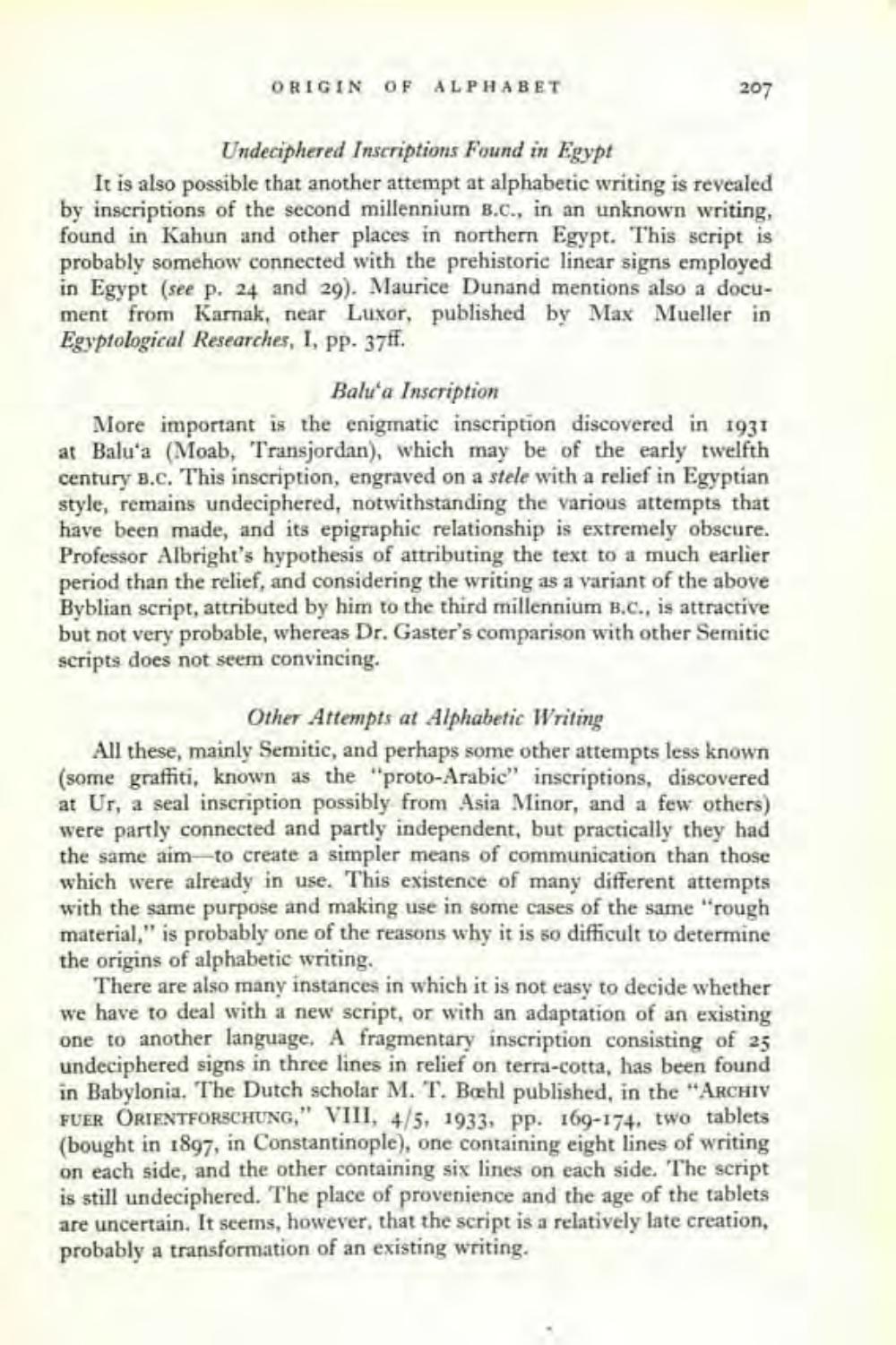________________
ORIGIN OF ALPHABET
207
Undeciphered Inscriptions Found in Egypt
It is also possible that another attempt at alphabetic writing is revealed by inscriptions of the second millennium B.C., in an unknown writing, found in Kahun and other places in northern Egypt. This script is probably somehow connected with the prehistoric linear signs employed in Egypt (see p. 24 and 29). Maurice Dunand mentions also a document from Karnak, near Luxor, published by Max Mueller in Egyptological Researches, I, pp. 37ff.
Balu'a Inscription
More important is the enigmatic inscription discovered in 1931 at Balu'a (Moab, Transjordan), which may be of the early twelfth century B.c. This inscription, engraved on a stele with a relief in Egyptian style, remains undeciphered, notwithstanding the various attempts that have been made, and its epigraphic relationship is extremely obscure. Professor Albright's hypothesis of attributing the text to a much earlier period than the relief, and considering the writing as a variant of the above Byblian script, attributed by him to the third millennium B.C., is attractive but not very probable, whereas Dr. Gaster's comparison with other Semitic scripts does not seem convincing.
Other Attempts at Alphabetic Writing
All these, mainly Semitic, and perhaps some other attempts less known (some graffiti, known as the "proto-Arabic" inscriptions, discovered at Ur, a seal inscription possibly from Asia Minor, and a few others) were partly connected and partly independent, but practically they had the same aim to create a simpler means of communication than those which were already in use. This existence of many different attempts with the same purpose and making use in some cases of the same "rough material," is probably one of the reasons why it is so difficult to determine the origins of alphabetic writing.
There are also many instances in which it is not easy to decide whether we have to deal with a new script, or with an adaptation of an existing one to another language. A fragmentary inscription consisting of 25 undeciphered signs in three lines in relief on terra-cotta, has been found in Babylonia. The Dutch scholar M. T. Bahl published, in the "ARCHIV FUER ORIENTFORSCHUNG," VIII, 4/5, 1933, pp. 169-174, two tablets (bought in 1897, in Constantinople), one containing eight lines of writing on each side, and the other containing six lines on each side. The script is still undeciphered. The place of provenience and the age of the tablets are uncertain. It seems, however, that the script is a relatively late creation, probably a transformation of an existing writing.




